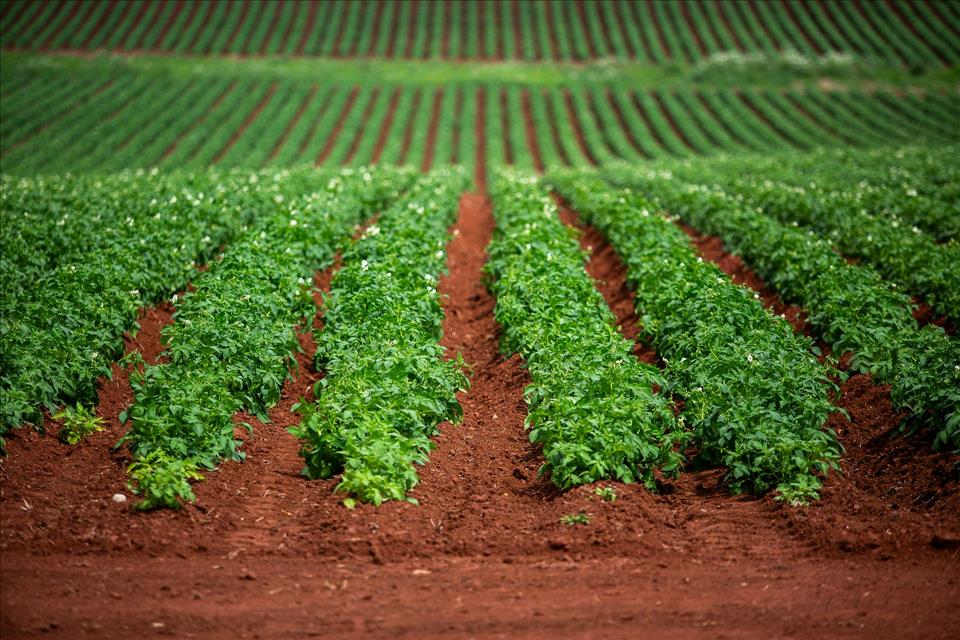How Researchers Are Making Precision Agriculture More Affordable
Meanwhile, agriculture is also facing calls to reduce emissions. The industry is responsible for about 10 per cent of Canada's greenhouse gas emissions , and the federal government has set an ambitious goal: reduce emissions from fertilizer use by 30 per cent by 2030 .
Farming is tough even during the best of times. Rising costs and the dangers posed by climate change will only make it even more challenging in the years to come.
That's where our work comes in. At MacEwan University, through our spin-out company PimaSens , we have developed Agrilo - a low-cost soil testing sensor paired with a smartphone app.
Our goal is simple: give farmers clear, real-time guidance on fertilizer use so they can save money, boost yields and protect the environment.
How the sensor worksAgrilo takes technology we first built in the lab and translates it into an easy-to-use diagnostic tool for the field. Unlike traditional soil testing, which often requires sending samples to a lab and waiting days for results, Agrilo provides answers in minutes.
Farmers collect a small soil sample, react it with a pre-filled solution, place droplets onto a paper-based or vinyl colorimetric sensor, and capture the result using their phone camera. The Agrilo app then interprets the colour change, quantifies nutrient levels, and generates fertilizer recommendations tailored to the field.
Each Agrilo sensor costs about $10 and is designed to detect a specific nutrient or soil property. The full suite includes sensors for: nitrate, phosphate, potassium, pH, sulphur, magnesium, manganese, calcium, boron, iron, natural organic matter, cation exchange capacity and more.
A step-by-step guide to using the Agrilo sensor for real-time soil monitoring. (PimaSens)
Farmers can select the tests most relevant to their crops and soils. These results feed directly into Agrilo's smartphone app, which analyzes patterns and suggests the most optimal fertilizer adjustments.
This precision is critical. Overuse of fertilizer wastes money and increases greenhouse gases, while underuse limits yields. Getting the balance right improves farm efficiency and protects ecosystems.
With fertilizer shortages , soil degradation accelerating and climate concerns mounting, there is an urgent need for practical solutions that can be deployed quickly and affordably.
For farmers, the value is clear:
● Healthier soil through balanced nutrient application.
● Higher crop yields from optimized fertilizer use.
● Lower costs by reducing waste.
● Reduced environmental harm from nutrient runoff and fertilizer-related emissions.
The research behind the toolOur sensors and platform have been validated in peer-reviewed research with the Agrilo version simplified for ease of use by farmers. We also hold a provisional patent, with a full filing in progress. This ensures that the innovation is both scientifically sound and protected for scaling.
Agrilo was created to be both affordable and accessible. (Author provided)
Agrilo was created to be both affordable and accessible. Conventional soil testing often costs hundreds of dollars and involves long wait times. Agrilo delivers the same type of data - validated against results from traditional labs - at a fraction of the cost and in real time.
This opens up opportunities not just for Canadian farmers but also for communities worldwide, including schools and small scale farmers in the Global South.
One of the most exciting aspects of Agrilo is its versatility. Beyond the farm, Agrilo doubles as an education platform. In classrooms, students can learn hands-on how soil nutrients affect crops, food security and ecosystems.
Using the same colorimetric sensors as farmers, students can connect textbook science to real-world environmental challenges - making soil chemistry, agriculture and sustainability more tangible.
Globally, fertilizer use has increased by 46 per cent since 1990 . About one third of the world's soils are already degraded, with degradation continuing to accelerate .
By making precision agriculture practical and affordable, we can help address these challenges at scale - showcasing how research developed in Canadian labs can benefit farms, classrooms and communities worldwide.
Looking aheadOur team is continuing to refine Agrilo. We are already testing the platform with farmers and partners in Canada, Kenya, Costa Rica and beyond.
At the same time, we are building partnerships with schools and international organizations to use Agrilo as both a farming tool and a hands-on educational resource. Several high schools in Alberta have started to try out the Agrilo tool to enhance applied science learning.
Ultimately, our vision is to make precision agriculture accessible to everyone - not just large-scale industrial operations. With the right tools, all farmers can play a critical role in feeding the world sustainably, protecting ecosystems and helping their countries meet their climate goals.

Legal Disclaimer:
MENAFN provides the
information “as is” without warranty of any kind. We do not accept
any responsibility or liability for the accuracy, content, images,
videos, licenses, completeness, legality, or reliability of the information
contained in this article. If you have any complaints or copyright
issues related to this article, kindly contact the provider above.
Most popular stories
Market Research

- New Cryptocurrency Mutuum Finance (MUTM) Raises $15.8M As Phase 6 Reaches 40%
- Bydfi Joins Korea Blockchain Week 2025 (KBW2025): Deepening Web3 Engagement
- Yield Basis Nears Mainnet Launch As Curve DAO Votes On Crvusd Proposal
- 0G Labs Launches Aristotle Mainnet With Largest Day-One Ecosystem For Decentralized AI
- Ethereum-Based Defi Crypto Mutuum Finance (MUTM) Raises Over $16 Million With More Than 720M Tokens Sold
- Fintech's Gender Gap In Focus: Drofa Comms' Women Leading The Way Joins Evolvh3r's She Connects At TOKEN2049






















Comments
No comment